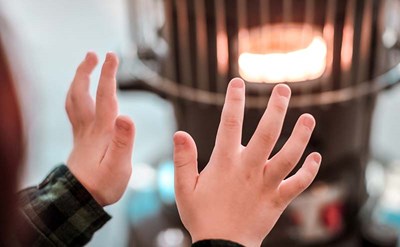You should only use the Heimlich Maneuver if a person is choking and his or her life is endangered by a windpipe obstruction. Choking is signaled by an inability to speak, cough or breathe, and may result in a loss of consciousness and death. Avoid using excessive force in employing the Heimlich Maneuver to avoid injury to the ribs or internal organs. Given the potentially life-or-death nature of the situation, use your best judgment.
In the event of an adult choking, the American Heart Association and ACEP offer the below guidelines. In the event of a child choking, see this page.
Conscious Adult
- In the event of choking, rescuers should take action if they see signs of severe airway obstructions (including poor air exchange and increased breathing difficulty, a silent cough, cyanosis or if the person is unable to speak or breathe).
- To differentiate between mild airway obstruction and severe airway obstruction, the rescuer should ask, “Are you choking?” If the victim nods yes, assistance is needed. Choking also often is indicated by the Universal Distress Signal (hands clutching the throat).
- If the person can speak, cough or breathe, do not interfere.
- If the person cannot speak, cough or breathe, give abdominal thrusts known as the Heimlich Maneuver.
- To employ the Heimlich Maneuver, reach around the person’s waist. Position one clenched fist above the navel and below the rib cage. Grasp your fist with your other hand. Pull the clenched fist sharply and directly backward and upward under the rib cage six to 10 times quickly.
- In case of obesity or late pregnancy, give chest thrusts.
- Continue uninterrupted until the obstruction is relieved or advanced life support is available. In either case, the person should be examined by a physician as soon as possible.
Unconscious Adult
- Position the person on his or her back, arms by side.
- Shout for help. Call 911 or the local emergency number.
- Perform a finger sweep to try to remove any foreign body from the mouth. Only remove an object you can see and easily extricate.
- Listen for breathing and watch for the chest to rise and fall. If the person is not breathing, perform rescue breathing. If unsuccessful, give six to 10 abdominal thrusts (the Heimlich Maneuver). To perform abdominal thrusts on an unconscious person, kneel over the person and place the heel of one hand on the person’s abdomen, slightly above the navel. Next, place your other hand on top of the first. Press into the abdomen with quick, upward thrusts.
- Repeat sequence: Perform finger sweep, attempt rescue breathing, perform abdominal thrusts, until successful.
- Continue uninterrupted until the obstruction is removed or advanced life support is available. When successful, have the person examined by a physician as soon as possible.
- After the obstruction is removed, begin CPR, if necessary.
If you are choking and are alone:
- Do not panic; if possible, take slow breaths.
- Call 911 or the local emergency number immediately (even if you cannot speak); the dispatcher should be able to recognize that an emergency is occurring. If you are using a land-line, in some (but not all) areas, he or she may then be able to trace the call and send emergency personnel to you. (Cell phone calls may not be traceable to an exact location.)
- If available, lean over the back of a chair and press hard on your abdomen and chest to expel the object or attempt to use your fists to give yourself abdominal thrusts (Heimlich Maneuver).
- To employ the Heimlich Maneuver, position one clenched fist above the navel and below the rib cage. Grasp your fist with your other hand. Pull the clenched fist sharply and directly backward and upward under the rib cage six to 10 times quickly.
- In case of obesity or late pregnancy, give chest thrusts.
- Continue uninterrupted until the obstruction is expelled or advanced life support is available. In either case, you should be examined by a physician as soon as possible.
 American College of Emergency Physicians
American College of Emergency Physicians







